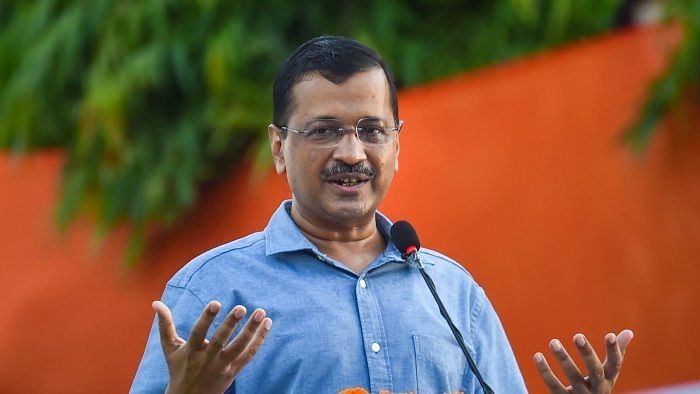
Armed with his trademark style of bowling with repartees, Aam Aadmi Party convener Arvind Kejriwal on Monday said at a press conference at Surat that he has a few predictions in store for the Gujarat Assembly elections, since his predictions for Punjab and Delhi were proven true.
Taking a piece of paper, Kejriwal wrote three such projections – first, AAP president Gopal Italia will win by a huge margin, the party’s chief ministerial candidate Isudhan Gadhvi, too, will win with a huge margin. And, the party candidate from Varachha Alpesh Katahiriya, too, will tide over with a majority.
Kejriwal’s bets for his party – which managed only 28,418 votes across the 30 seats it contested in 2017 – are considerably brave. Its impressive performance in the state’s local body polls, where it managed to register a vote share of 13.28 per cent, showed that it can be a viable alternative to the Congress in the primary Opposition space, and in the long run, an alternative to the Bharatiya Janata Party that has held sway in the state for close to three decades.
Also Read | AAP will win Gujarat Assembly polls: Kejriwal; promises old pension scheme for govt employees by January31
AAP candidate for Ghatlodia, which is chief minister Bhupinder Patel’s seat, is Vijay Patel. He says the party’s primary offerings are development related.
“We’re talking of better schools, better infrastructure and a grip over rising prices,” Patel says.
It is in Surat where the AAP’s foray has takers. In the 2021 local body polls, AAP won 27 of the corporation’s 120 seats, effectively replacing the Congress as the primary Opposition. Another of Kejriwal’s well-timed predictions projects a win of 7 or 8 seats among the region’s 12 constituencies.
Another such prediction echoes Kejriwal’s belief. A study by CSDS Lokniti projects a respectable tally for the AAP – their projections show that AAP could win as much as 22 per cent of the state’s vote share replacing the Congress as the primary Opposition.
CSDS’s Bhanu Parmar says that the Congress should indeed be worried. “The loss could be bigger for the Congress; the BJP, on the other hand, has traditional voters who stand by its side mostly,” said Parmar.
He adds that, on the other hand, Gujarat poses a unique challenge for AAP. “In Delhi or in Punjab, AAP was challenging the Congress which is not quick on its feet. In Gujarat, it will be up against the might of the BJP whose electoral pursuits are stronger,” he said.
While its focus is centered in the Surat region, the AAP is also concentrating on seats in Saurashtra where it hopes to attract the swing voters who would have voted for the Congress in 2017.
Dhawal Vasavada of the political consultancy firm PoliticalEDGE says that there are three kinds of voters that the AAP hopes to attract. “First is the swing voters, second is the BJP voter who is angry with the party for various reasons, and third is the Congress voter tired of its failures,” he says.
What is also interesting to note is the urban-rural vote divide. In 2017, the Congress outclassed the BJP in Gujarat's rural areas, convincing them that it was indeed an option if they wanted to defeat the BJP. In 2022, the AAP is somewhat attempting to do the same. In Surat, it is the disgruntled working class that it is trying to woo.
Among the 182 of the state’s Assembly segments, 98 are rural seats while 84 are urban. It is in the urban areas that the BJP has bigger sway — in 2017, it won 63 of the urban seats, but could manage only 36 of the rural seats.
Patel says that the party has found better resonance in rural areas. Parmar says that rural areas won’t be easy for AAP since the BJP has won a sizeable number of village, block and panchayat level elections in the state since the 2017 elections.
“Another thing to note is the undercurrent the AAP could have in the urban areas since there are educated voters who do not stick to caste voting patterns,” he says.